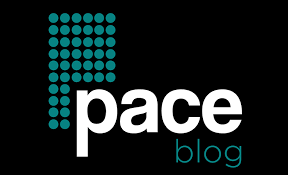The integration of the digital space into print as a continuation is one that businesses have had to confront in the ever-evolving landscape of marketing. Perhaps, in this regard, among the most vital tools to have thus far gained traction is that of the Quick Response code, better known as the QR code. These 2D codes can link to anything from websites to videos and social media profiles with ease. That already makes them some great additions to printed marketing material. Following are some ways one could use QR codes on print material for maximum engagement.

Know Your Audience
Your target audience determines what integrations of QR codes you shall need before setting up. Consider their techno-savviness, preference for use, and behavior. Younger audiences could be wired to scan a QR code, while older demographics would have much to learn about this technology. Base your integrations on the habits of your audience in use to make sure that you maximize your results.
Integrate into Digital Marketing Strategies
It’s all about putting the QR code into context. Utilize it to bridge the gap between your print and digital campaigns. You could put a QR code in an email newsletter, for example, and take that subscriber directly to a specific landing page or social media promotion. This way, the marketing experience is seamless, moving consumers across stages of deeper engagement with your brand on multiple touchpoints.
Encourage QR code scanning
Improve the use of QR codes by teaching the audience how to use them. Not everyone is conversant with QR code scanning, and including short instructions to introduce it will be a great help. Basic prompts like “Open your camera and point it here to discover more!” could easily demystify it and encourage its use. This is especially important if your target audience includes non-tech-savvy individuals.
Protect Your Materials with Laminators
Adding laminators to your printed marketing can really make your materials, including those with QR codes, last a lot longer and be more visually appealing. In general, laminating adds a layer of protection to the printed material that will protect it from wear and tear, moisture, and fading. This is very important for items that will be used over and over, such as menus, brochures, or flyers placed outside.
Make It Noticeable
While QR codes are functional, they can also be creative. Style your QR code so that it reflects the design of your brand. Add colors or a logo that is consistent with all of your other marketing materials. Just be sure to make sure that your design decisions aren’t in conflict with how well someone is able to scan the code. A nicely designed QR code will look nice and might even prompt people to scan it.

Consider Linking to Mobile-Friendly Content
As QR code scans are normally done on a mobile device, ensure that whatever is linked from the QR code is optimized for mobile. Websites and landing pages should be optimized for mobile views so that it will be user-friendly. If users experience poor content accessing due to poor mobile optimization, they may feel discouraged from responding to future QR codes.
This will allow you to engage your audience a bit better, while connecting your physical and digital campaigns so much better. Knowing your audience, strategic placement of codes, offering relevant content, and promotion in usage of codes will definitely ensure the optimum use of QR codes in your campaigns. As technology is constantly developing day by day, the incorporation of creative tools such as QR codes will be one avenue your business takes to stay timely with maintaining audience engagement.

